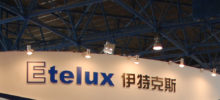1 Summary
The Trace PPM Moisture Transmitter analyzer is used to control the H2O content in the glove box system. The range is 0-500ppm, it is linear at 0-50ppm, and more than 50ppm is an estimated value.
The probe is a “double helix” platinum wire wound around a special insulating material. The probe surface is coated with completely dehydrated phosphoric acid. Water molecules in the gas pass through the phosphoric acid membrane to electrolyze H + and OH- to generate H2 and O2 and generate electric current. Therefore, the current generated by water molecules reaching the probe surface depends on the content of water molecules in the gas. The original signal is temperature compensated and amplified.
2 Composition
Trace PPM Moisture Transmitter consists of a probe and a special circuit, and the interface is NW40 flange seal. The probe is protected from physical damage by a protective cover. The signal connection port is a vacuum-sealed interface. The circuit is installed in a sealed housing behind the NW40 flange.
The analyzer’s circuit operates at 24VDC. Output 4-20MA or 0 to 10VDC according to water content. And there is a heating switch to control the temperature of the probe.
The circuit and probe components are calibrated by the manufacturer’s standard gas; there are no components that require customer adjustment and maintenance. (Note: If there are special requirements, we can consider providing a calibration method that allows trained technicians to recalibrate the accuracy of the probe below 100ppm.)
3 Installation
The water probe is fixed by the NW40 flange vacuum seal interface. It is usually connected to the T-type interface of NW40. This ensures that the probe can directly measure the airflow without being in a blind spot. The probe requires a lower flow rate for measurement.
Do not connect the probe connector until the chamber has been sufficiently cleaned with inert gas.
The operation of the analyzer is displayed through a PLC touch screen or another secondary display instrument.
4 Maintenance and regeneration
Routine maintenance includes cleaning and regeneration.
The following parts are required to disassemble and maintain the water probe.
Soft, absorbent, fiberless cloth
A small amount of phosphoric acid cleaning solution
Protective equipment including gloves and goggles
note:
Before servicing the water probe, the analysis should be turned off and removed.
Worldwide shipping
Shipping & Returns



































Reviews
There are no reviews yet.